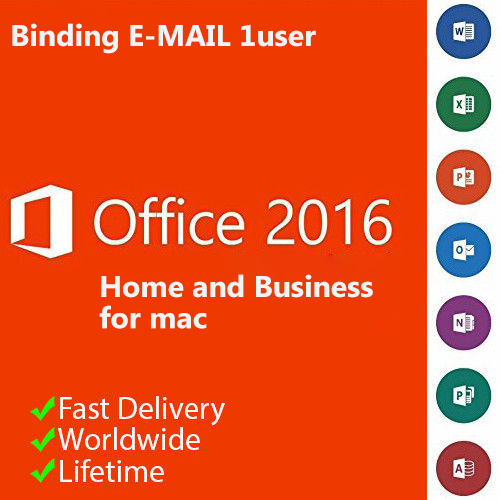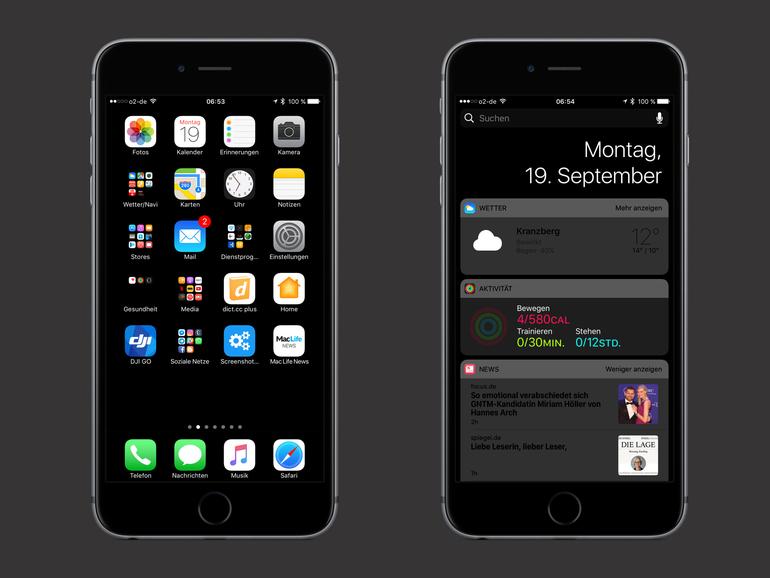- Mail Merge Outlook For Mac 2016
- Export Apple Mail To Outlook For Mac 2016
- Mail Merge Word For Mac 2016
- Export Mail From Outlook For Mac 2016
- Mail Merge In Word For Mac 2016
Pre-Flight Check
- These instructions are intended specifically for setting up an email account in Microsoft Outlook 2016.
- If these instructions don’t quite work for you, check out our tutorial on setting up other e-mail clients.
- Not the right version of Microsoft Outlook? Check out How to Set up Email in Outlook 2013 or How To Set up Email on Microsoft Outlook 2010.
Outlook 2016 Configuration
To get started: Open Outlook 2016 from your Launchpad. If you've never used Outlook before, you'll be prompted to Click the Add Account button to go to the Accounts page.; Then, click the option for Other Email under Add An Account.; If you've already set up Outlook before, go to the Tools menu at the top of your Outlook window. Click the Accounts button on the left side. If you're running Mac OS X version 10.10 or later, follow these steps to set up an Exchange email account: Open Mail, and then do one of the following: If you've never used Mail to set up an email account, the Welcome to Mail page opens. If you've used Mail to create email accounts, select Mail. Connecting a Shared Mail Folder from other user in Outlook 2016. We can connect to another Users Mail folders, if the User was previous shared with us the resource. Just click on File Open Other User's Folder Write the Username that we want to Connect, in this case User. We will be able to see all the emails located in the User account, in.
Step #1: Add or Edit the Email Account
- To set up a new email account, click the File tab and then click Add Account.
- If you’re modifying the settings on an existing account already configured in Outlook, click on Account Settings and then click on Change settings for this account or set up more connections and skip ahead to Step #4: Modifying an Existing Account.
Step #2: Manual Setup for a New Email Account
- Select the radio button for Manual setup or additional server types.
- Then click Next.
Step #3: Select Email Account Type
Mail Merge Outlook For Mac 2016
- Select the radio button for POP or IMAP.
- And then click Next.
Step #4: Modifying an Existing Account
- If you’re editing an email account that already has been configured in Outlook, click on the account name and then click on the Change button. Otherwise, skip ahead to Step #5: Configure General Settings.
- WARNING:To avoid data loss, please use caution any time you change an email account’s connection type or delete an email account.
Removing an email account from a mail client also will remove all messages associated with it on the device and, specifically for POP accounts that are not configured to retain mail on the server, there may be no way to recover those messages. If you have any doubt or questions, please contact Heroic Support® for guidance.
- If you’re editing an email account that already has been configured in Outlook, click on the account name and then click on the Change button. Otherwise, skip ahead to Step #5: Configure General Settings.
Step #5: Configure General Settings
- Your Name is your name as you want it to appear in emails that you send
- Email Address should be the full email address
- Account Type will be POP3 or IMAP, depending on your preference. For its ability to keep email in sync across multiple devices (desktop, laptop, phones and tablets), IMAP generally is recommended.
- Incoming mail server
- When using standard (non-SSL) settings, use mail.yourdomainname.com
- When using secure (SSL) settings, use the server’s hostname (host.yourdomainname.com)
- Outgoing mail server (SMTP)
- When using standard (non-SSL) settings, use mail.yourdomainname.com
- When using secure (SSL) settings, use the server’s hostname (host.yourdomainname.com)
- Username is your full email address, not just the part before the at symbol.
- Password is the email account password.
- Require logon using Secure Password Authentication (SPA) must not be checked. SPA is not the same as SMTP authentication, which is used on cPanel servers.
Step #6: Configure Outgoing Server Settings
- Click the More Settings button, and select the Outgoing Server tab.
- My outgoing server (SMTP) requires authentication should be checked
- Use same settings as my incoming mail server should be enabled
- Log on to incoming mail server before sending mail (POP3 only) should not be enabled. That setting applies only to servers configured to allow POP Before SMTP authentication, in which a successful login to retrieve mail allows a user from the same IP address to also send mail for a period of time. It is not compatible with servers requiring SMTP authentication.
- Now select the Advanced tab at the top of the More Settings window.
Step #7: Configure Ports and Encryption
- Fill in the Advanced settings using the images and instructions below.
- Once complete, click OK to return to the previous window.
Standard (Non-SSL) IMAP Settings | Standard (Non-SSL) POP3 Settings |
|
|
Secure (SSL/TLS) IMAP Settings | Secure (SSL/TLS) POP3 Settings |
|
|

Step #8: Test Settings
- Click the Next button to make a connection to the server and test the configuration.
- If you’re using SSL settings and your server has a self-signed (free) SSL certificate installed on the mail server, you may get a popup warning. If so, you will need to click the Yes button to accept the certificate and proceed. Alternatively, you may select View Certificate and then click Install Certificate on the next screen to install the certificate locally and prevent the notice on subsequent connections.
- Once you click Yes, Outlook will test the connection settings.
- When you see the success message, you’re ready to start using your email address with Outlook 2016.
Bonus for IMAP Users: Choose Which Folders to Display in Outlook
Export Apple Mail To Outlook For Mac 2016
When connecting to your email server using the IMAP protocol, you can choose the specific mail folders to which you wish to subscribe.
To do so, right-click on your email account’s Inbox in Outlook 2016 (some older versions of Outlook may require you to right-click on the email address itself) and then select IMAP Folders from the popup list.
In the IMAP Folders window, click on the Query button in the top right of the window to get the current list of folders in your email account from your server.
Once the list has downloaded from the server, you will see each of your account’s folders on the server listed in the All tab, which should be selected by default, you will see a list of all the email folders in your account on the server. Folders to which you already are subscribed will appear with a folder icon, while folders to which you are not subscribed will have no icon next to their names.
You can manage your folder subscriptions by clicking on the folder name in the All list and using the Subscribe or Unsubscribe buttons.
Once you’ve finished making changes, click the Apply button and then select OK if needed. It will take a few moments for the folder list to update in your Mail pane.
Find Detailed Information in Our Knowledge Base
Learn how to create a new email address in cPanel at Creating Email Addresses in cPanel.
Find instructions to set up your email account in any email client at How to Set up any Email Client.
For detailed instructions to set up your email account in popular email clients, visit:
- How to Set up Email in Outlook 2013
- How to Set up Email in Outlook 2010
- How to Set up Email in OS X 10.5
- How To Set up Email on Android
Related Articles:
- 1Outlook 2016 for Mac and EWS Setup
- 1.1System Requirements
- 10Identified Support/Known Issues
| KB 21609 | Last updated on 2015-10-07 | Last updated by Jorge de la Cruz | (0 votes) | Verified in: ZCS 8.6ZCS 8.5 | |
- This is certified documentation and is protected for editing by Zimbra Employees & Moderators only. | |||||
| KB 21609 | Last updated on 2015-10-7 | |
|---|---|---|
(0 votes) | ||
- This is certified documentation and is protected for editing by Zimbra Employees & Moderators only. | ||
Microsoft will release Office 2016 soon, this new Office have interesting new features:
- The new apps offer full retina display.
- The look and feel is the same like Ofice 2013 for Windows, or almost the same
- Outlook 2016 supports now 100% Office 365, and only works with Exchange 2010 or above
System Requirements
To configure Outlook 2016 with EWS for Zimbra Collaboration need the next:
- A valid EWS license - [1]
- Zimbra Collaboration 8.5+
EWS Requires the Proxy service installed
Important note: EWS only works if you have the Proxy role installed and properly configured. If not, you will not be able to use the EWS feature, as Outlook try to connects for the port 443, more information in the next Bugs:
Please make sure you have Proxy installed before you try to configure your Outlook Clients in OS X
First step, is open the Outlook 2016 app
Need to follow the welcome wizard
Next, press on Try it for free
Let checked the Update field, and uncheck the send feedback, you can read more about what information our computer send if you clik on the Privacy Statement link.
And, it's done!

Can import all the Outlook 2011 data, or just a .pst file, in this case, I've click on Not now.
After open Outlook for the first time, it's empty.
Is time to configure the Zimbra Collaboration account. Click on Outlook > Preferences and now Click under Accounts
Click on the Exchange or Office 365 option.
If you have the DNS properly configured, just fill the E-mail address, and the Username and Password, you can also unmark the Configure automatically and introduce the IP or FQDN (after put the IP, EWS will autodiscover the FQDN, so the best thing is have the DNS properly configured and use always FQDN)
That's it, Outlook 2016 will sync everything in our account: Mail, Contacts, Calendar and Tasks.
We can see the Outlook 2016 logo and the amount of unread messages:
One of the good news is that all the Contacts, with also the image, will be syncronized between Zimbra Collaboration and the Outlook 2016 for Mac.
All the Tasks will be syncronized as well, we can create one on the Outlook 2016 or in the Web Client, and they will sync between devices.
All the Appointments will be syncronized as well, we can create one on the Outlook 2016 or in the Web Client, and they will sync between devices.
We can connect to another Users Mail folders, if the User was previous shared with us the resource.
Just click on File > Open > Other User's Folder
Write the Username that we want to Connect, in this case User
We will be able to see all the emails located in the User account, in the Inbox Folder
When we compose a new email message, we can select the username from who we want to send the email.
One of the good points here is the ability to paste a Full Excel content in HTML, like this for example:
And we will receive it very well in the Web Client, this was an issue in the previous Outlook.
- Please follow the official Microsoft Steps - https://support.microsoft.com/en-us/kb/2872257
Outlook 2016 crash after open it
If Outlook 2016 crash after the first open, please follow this steps:
- Open Terminal
- Type defaults delete com.microsoft.Outlook, to delete the old preferences
- killall cfprefsd (to kill the cached prefs)
- Launch Outlook

Shared Calendar
The ability to connect to a Shared Calendar doesn't work.
Sync the Signatures
The ability to Sync the Signatures between the Web Client and the Outlook 2016 doesn't work.
| Verified Against: Zimbra Collaboration Suite 8.6, 8.5 | Date Created: 03/07/2015 |
| Article ID:https://wiki.zimbra.com/index.php?title=Outlook_2016_For_Mac_And_EWS_Setup | Date Modified: 2015-10-07 |
Try Zimbra
Try Zimbra Collaboration with a 60-day free trial.
Get it now »
Want to get involved?
You can contribute in the Community, Wiki, Code, or development of Zimlets.
Find out more. »
Mail Merge Word For Mac 2016
Other help Resources
User Help Page »
Official Forums »
Zimbra Documentation Page »

Looking for a Video?
Visit our YouTube channel to get the latest webinars, technology news, product overviews, and so much more.
Go to the YouTube channel »
| Wiki/KB reviewed by | Jorge | SME2 | Copyeditor | Last edit by Jorge de la Cruz |
|---|
Export Mail From Outlook For Mac 2016
Mail Merge In Word For Mac 2016
